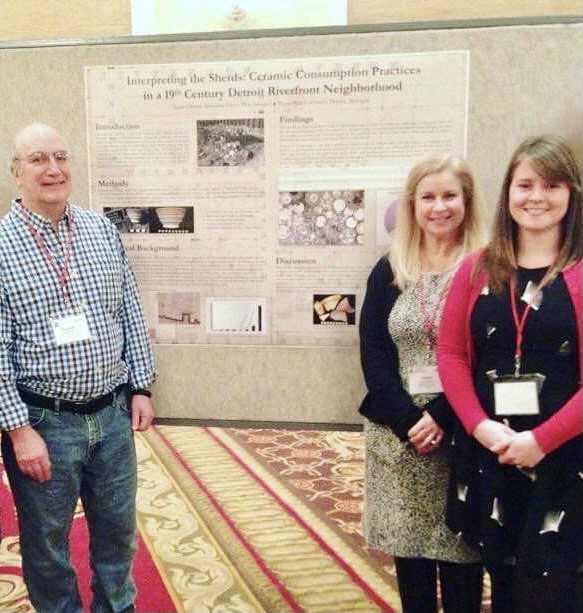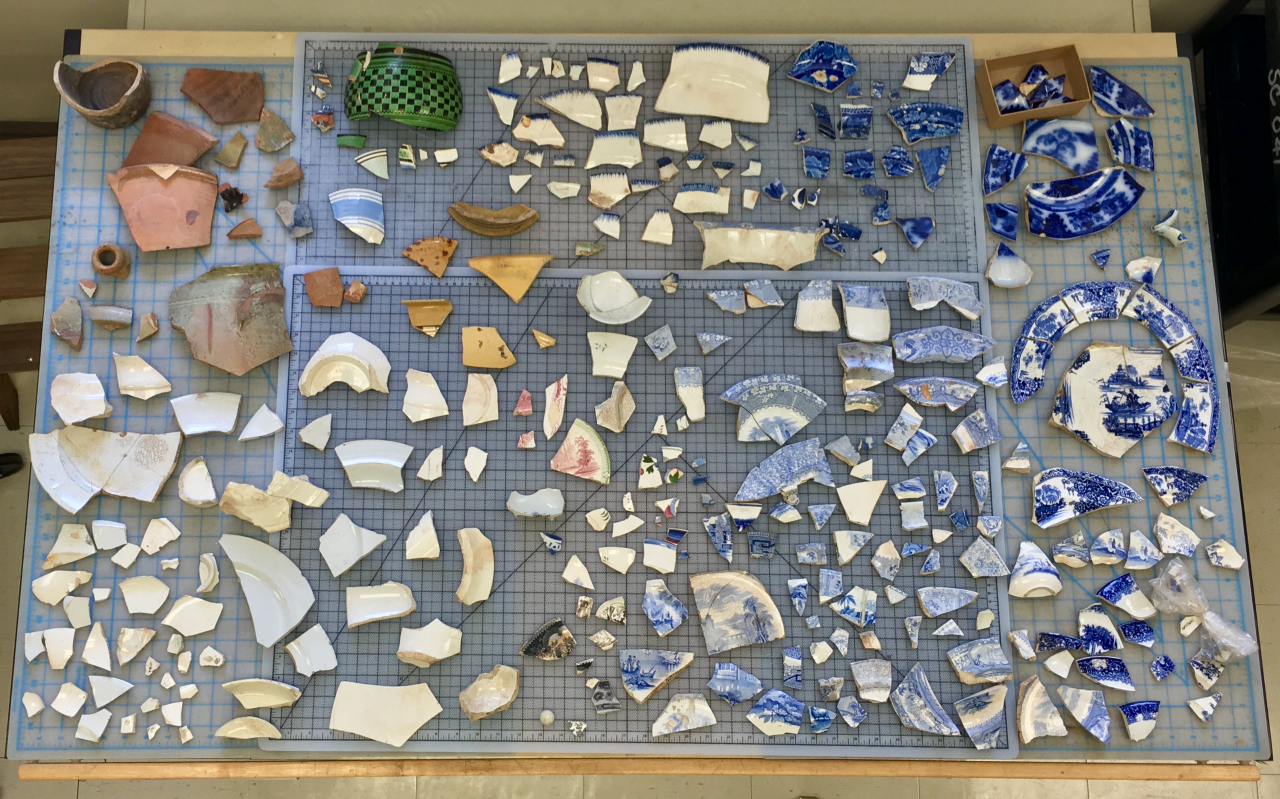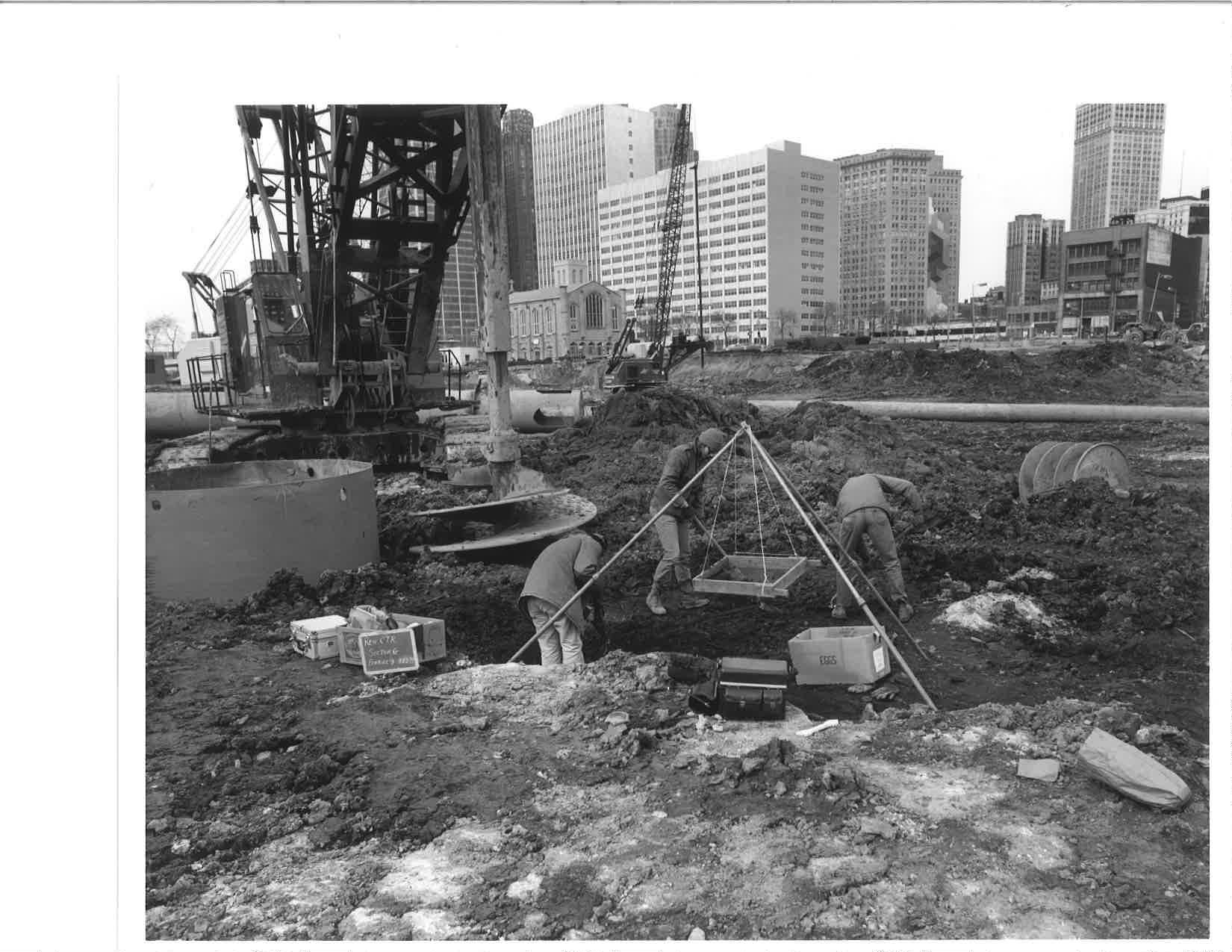New publication on Detroit Archaeology about artifacts from Detroit's Beaubien family
 New publication in the "Midcontinental Journal of Archaeology" by Anthropology Ph.D. candidate Samantha Ellens, former Academic Service Officer Susan Villerot and Don Adzigian: "Interpreting the Sherds: Ceramic Consumption Practices in a Nineteenth-Century Detroit Riverfront Neighborhood" (Vol. 46, No. 1).
New publication in the "Midcontinental Journal of Archaeology" by Anthropology Ph.D. candidate Samantha Ellens, former Academic Service Officer Susan Villerot and Don Adzigian: "Interpreting the Sherds: Ceramic Consumption Practices in a Nineteenth-Century Detroit Riverfront Neighborhood" (Vol. 46, No. 1).
The peer-reviewed article co-authored by Ellens, Villerot and Adzigian presents the results of their multi-year research project involving the artifacts excavated from the Beaubien family privy during the Renaissance Center excavations.  This image shows one of the ceramic assemblages the co-authors analyzed. During the Renaissance Center excavations in 1973-1974, Wayne State archaeologists recovered these and thousands of other artifacts from Feature 4G, a privy deposit linked to the Beaubien family's home (ca. 1833), which once stood on the site.
This image shows one of the ceramic assemblages the co-authors analyzed. During the Renaissance Center excavations in 1973-1974, Wayne State archaeologists recovered these and thousands of other artifacts from Feature 4G, a privy deposit linked to the Beaubien family's home (ca. 1833), which once stood on the site.
Wayne State University's Gordon L. Grosscup Museum of Anthropology contains one of the most extensive urban historical archaeology collections in the United States. The co-authors' interest in the Renaissance Center collections evolved out of their involvement with the larger Unearthing Detroit Project. In 2013 the Unearthing Detroit Project, led by Dr. Krysta Ryzewski, began combining academic research and public outreach to reexamine the museum's Detroit-based historical archaeology collections. The project team first focused on the museum's largest archaeological collection, the materials recovered from the nine city blocks that were leveled to make space for the footprint of the Renaissance Center in 1973-1974.
 During the Renaissance Center excavations, archaeologists from Wayne State's Department of Anthropology recovered over 30,000 artifacts from 26 privy and midden features; most of the artifacts date to the period between 1830 and 1860 when Detroit was rapidly transforming into an industrial city. The Grosscup Museum of Anthropology houses collections recovered from over 20 large-scale excavations conducted in Detroit since 1960. Many of the excavations undertaken between the 1960s-1980s, including those at the Renaissance Center, were salvage or cultural resource management compliance projects that did not have the budgets or time to accommodate the longer-term laboratory processing and analysis of the finds.
During the Renaissance Center excavations, archaeologists from Wayne State's Department of Anthropology recovered over 30,000 artifacts from 26 privy and midden features; most of the artifacts date to the period between 1830 and 1860 when Detroit was rapidly transforming into an industrial city. The Grosscup Museum of Anthropology houses collections recovered from over 20 large-scale excavations conducted in Detroit since 1960. Many of the excavations undertaken between the 1960s-1980s, including those at the Renaissance Center, were salvage or cultural resource management compliance projects that did not have the budgets or time to accommodate the longer-term laboratory processing and analysis of the finds.
As a result, many of Detroit's earliest historical archaeological excavations have yet to be fully cataloged, studied, or published. The work completed by Ellens, Villerot and Adzigian illustrates how scholarly attention to old collections can advance new scholarship and historical archaeological knowledge – in this case, about the people who contributed to Detroit's emergence as a major city during the nineteenth century.